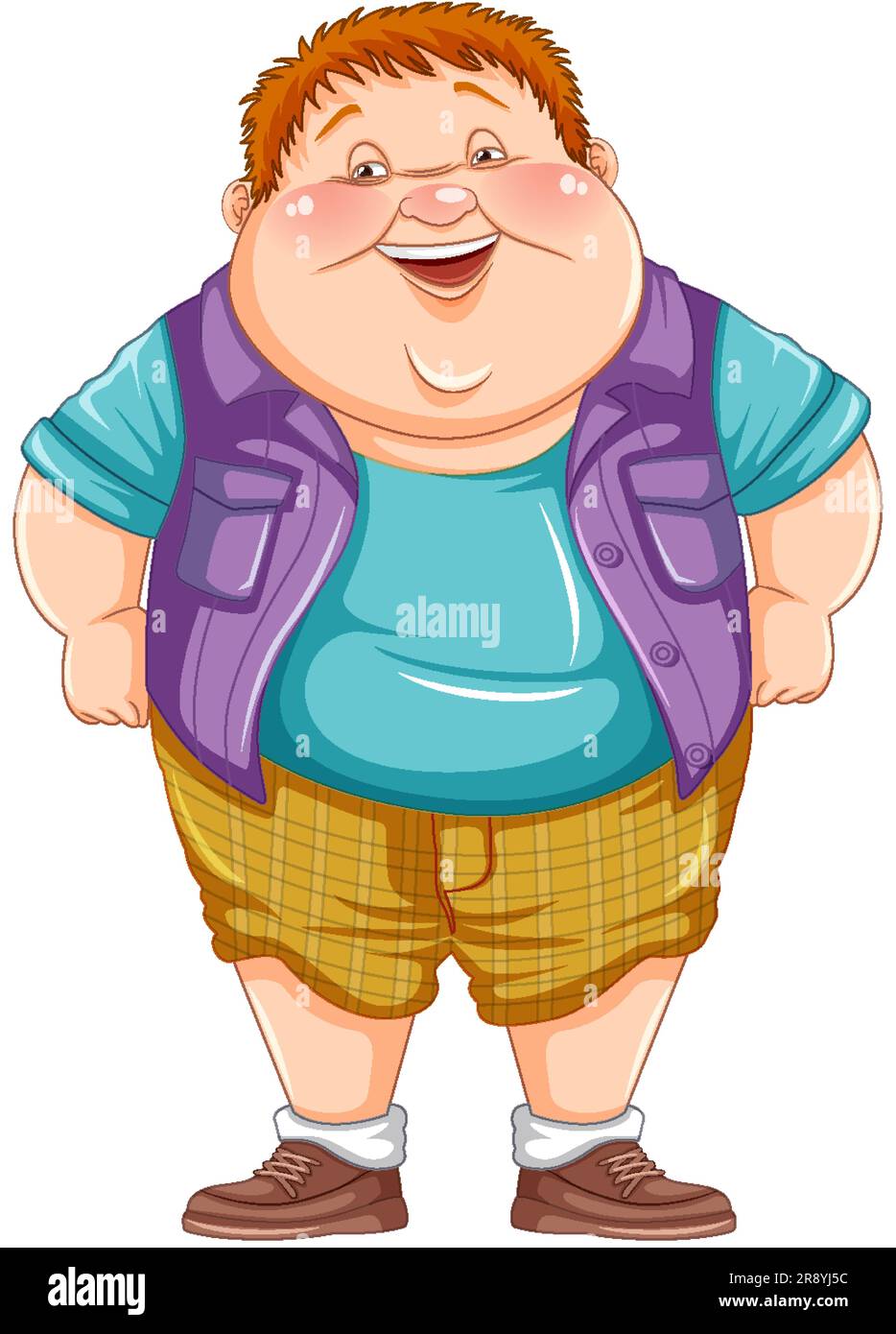Top 25 Beloved Fat Cartoon Characters
Why do certain cartoon characters, often the plus-sized ones, stick with us long after we've outgrown Saturday morning cartoons? Because these characters, with their generous girths and often even more generous personalities, represent more than just comedic relief. They embody comfort, acceptance, and a healthy dose of rebellion against societal norms.
From the Stone Age antics of Fred Flintstone to the cosmic cravings of Majin Buu, the world of animation has a long and storied history of showcasing characters who defy the slender, often unrealistic, body image often presented in media. These characters have resonated with audiences for generations, offering not only laughter but also a sense of relatability and representation often lacking on screen. Their physicality often becomes a source of their humor, a vehicle for slapstick, or even a metaphor for their larger-than-life personalities. But it's the depth beneath the surface, the complex blend of flaws, virtues, and endearing quirks, that truly cements their place in our hearts.
| Character | Creator/Origin | Debut Year | Notable Traits | Impact |
|---|---|---|---|---|
| Homer Simpson | Matt Groening, The Simpsons | 1987 | Loving father, bumbling idiot, donut aficionado | Represents the average American, albeit with exaggerated flaws; comedic icon. |
| Winnie the Pooh | A.A. Milne, Disney adaptation | 1926 (books), 1966 (animation) | Kind, gentle, honey-loving bear | Embodiment of childhood innocence and simple joys. |
| Fat Albert | Bill Cosby, Fat Albert and the Cosby Kids | 1972 | Positive leader, teaches life lessons | Challenged stereotypes of overweight characters, promoting positive values. |
| Garfield | Jim Davis, Garfield | 1978 | Lazy, lasagna-loving cat, sarcastic wit | Relatable portrayal of indolence and self-indulgence. |
| Doraemon | Fujiko F. Fujio, Doraemon | 1969 | Robotic cat from the future, helps Nobita with gadgets | Beloved internationally, especially in Japan, for his whimsical adventures and helpful nature. |
List of overweight fictional characters (Wikipedia)
Consider Winnie the Pooh, whose plumpness is intrinsically linked to his love of honey and his gentle nature. His rounded form suggests comfort, warmth, and a certain sweetness that perfectly complements his personality. He's not a character defined by his weight, but rather, his weight contributes to his overall charm. Similarly, while Homer Simpson's physique is often the butt of the joke, it also underscores his relatable struggles with self-control and his undeniable love for his family, even amidst his often chaotic life.
Fat Albert, on the other hand, broke new ground in the 1970s. As the titular character of a show tackling important social issues, he was a positive, influential figure who defied negative stereotypes often associated with larger characters. He embodied resilience, leadership, and a strong moral compass, proving that weight did not equate to weakness or villainy. This positive representation was crucial in shaping perceptions and paving the way for more diverse and nuanced portrayals in animation.
The evolution of these characters mirrors society's evolving understanding of body image and representation. While early iterations might have relied on simplistic gags based on physical comedy, modern animated characters with larger bodies often exhibit a greater complexity. Theyre fully realized individuals with strengths, weaknesses, and aspirations that transcend their physical appearance. Ursula, the sea witch from Disney's The Little Mermaid, for example, uses her size to project power and intimidation, while Patrick Star, SpongeBob's best friend, embodies a blissful ignorance and childlike wonder that endears him to viewers.
The rise of anime has further diversified the representation of plus-sized characters. From the imposing and gluttonous Pig God in One Punch Man to the jovial and powerful Majin Buu in Dragon Ball Z, anime offers a range of portrayals that challenge Western conventions. These characters often wield immense power, both physical and magical, dismantling the notion that larger individuals are inherently less capable or dynamic.
Furthermore, the internet has played a significant role in celebrating and reimagining these characters. Fan art, memes, and online communities dedicated to "cartoon fatness" reflect a growing appreciation for body diversity and a playful subversion of traditional beauty standards. The Big Cartoon Wiki, for example, evolved from a Tumblr blog and demonstrates the dedicated fanbase for these characters.
Ultimately, the enduring appeal of fat cartoon characters lies in their ability to challenge our preconceptions and offer a refreshing alternative to the often-rigid ideals of beauty. They remind us that humor and heart can come in all shapes and sizes, and that true beauty lies in embracing individuality and celebrating our differences.
This diverse cast of characters from the lazy lasagna-lover Garfield to the well-meaning, if slightly bumbling, Baymax proves that weight is just one facet of a multi-dimensional character. Theyve become cultural touchstones, not because of their size, but because of their personalities, their stories, and the way they make us laugh, think, and perhaps, even feel a little more comfortable in our own skin.
- Code Promo Tooli Art
- Bollyflix Ullu Web Series Download Filmyzilla Your Ultimate Guide To Entertainment

60 Funny Fat Cartoon Characters To Draw Artistic Haven

How to draw Fat Albert Step by step drawing tutorials Fat cartoon

Fat Mexican Cartoon Characters